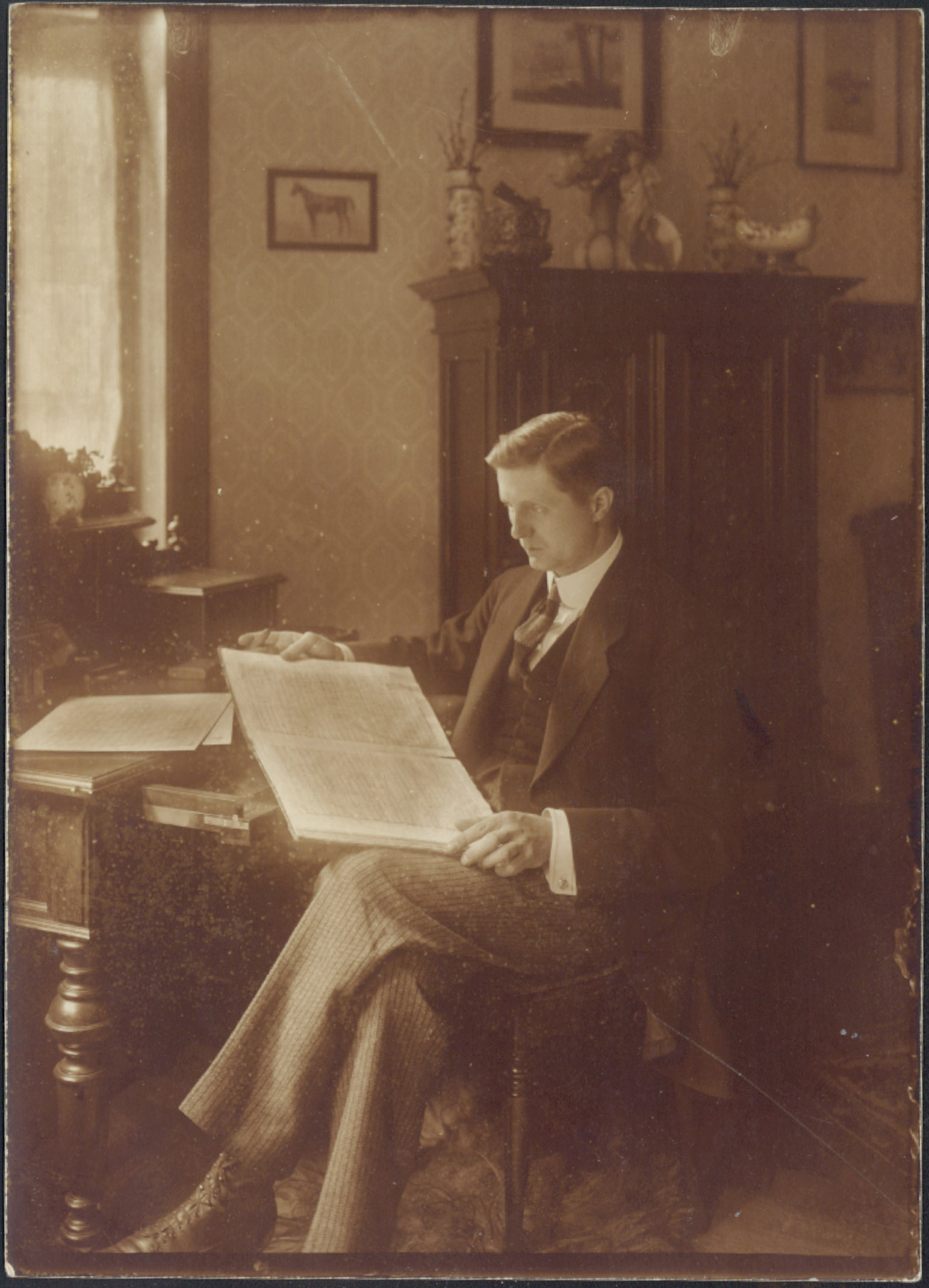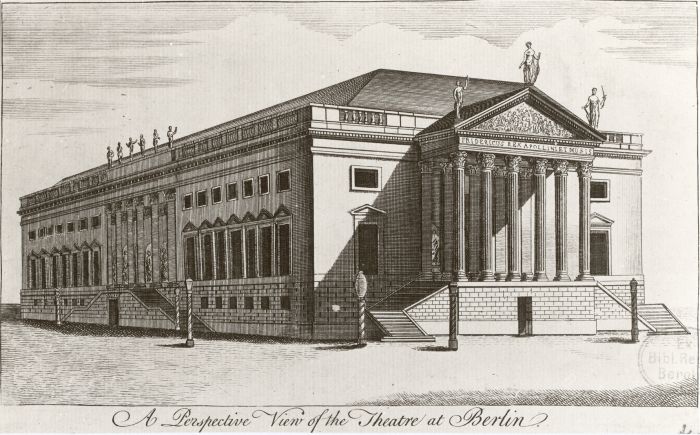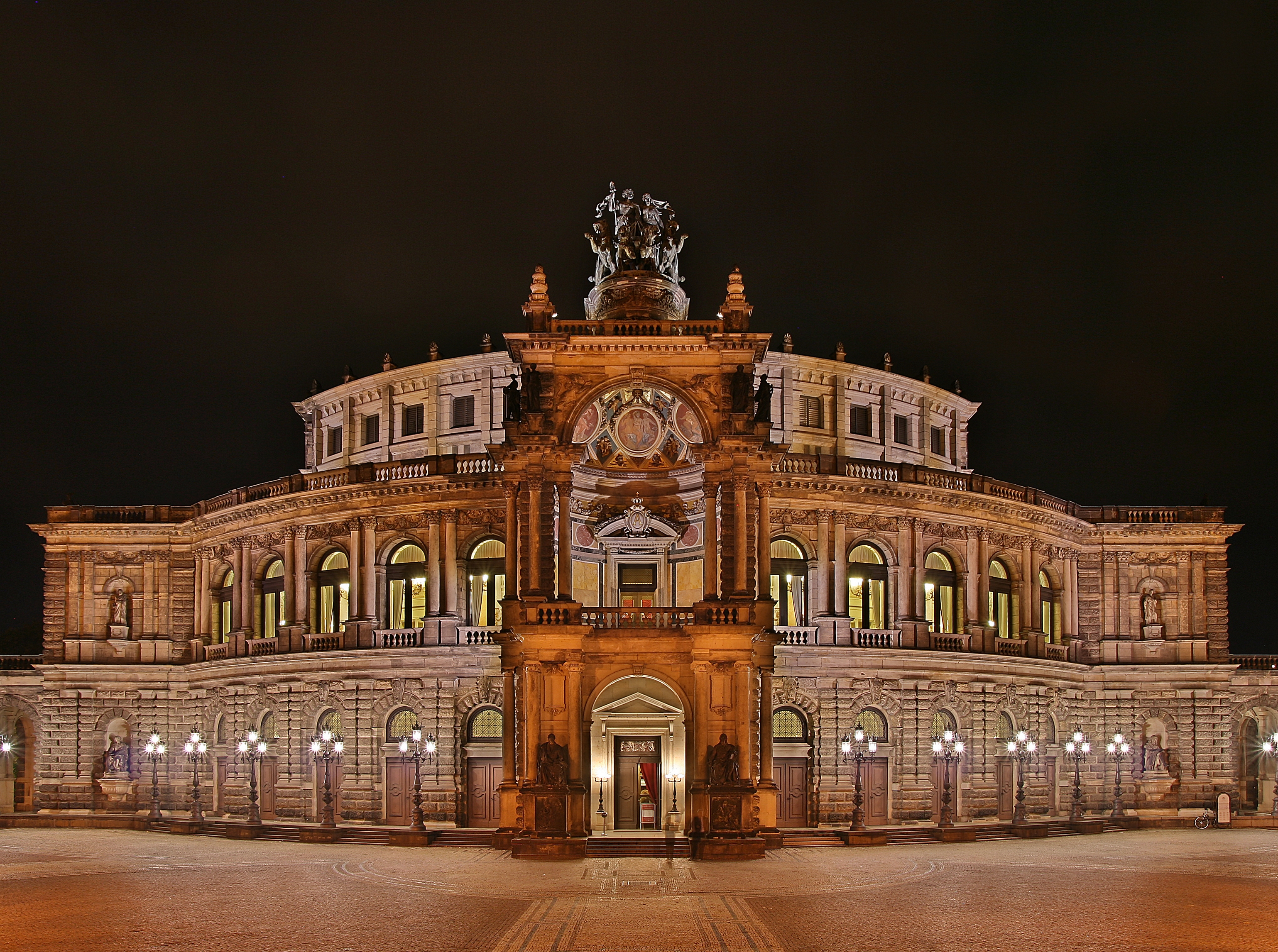|
Torsten Ralf
Torsten Ralf (2 January 1901 – 27 April 1954) was a Swedish operatic tenor, particularly associated with Wagner and Strauss roles, one of the leading dramatic tenors/heldentenors of the inter-war period. Ralf was born in Malmö. He began his vocal studies in Stockholm with Haldis Ingebjart and John Forsell, and later studied in Berlin with Hertha Dehmlow. He made his debut in 1930, as Cavaradossi in Stettin. After singing in Chemnitz (1931–33) and Frankfurt (1933–35), he joined the Staatsoper Dresden in 1935. He also appeared regularly at the Munich State Opera and the Vienna State Opera, establishing himself in roles such as Florestan, Tannhäuser, Lohengrin, Stolzing, Siegmund, Tristan, Parsifal, Bacchus, but also Radames, Otello. He created Apollo in Strauss's ''Daphne'' in 1938, and was part of the premiere of Heinrich Sutermeister's ' in 1942. Ralf made guest appearances at the Royal Opera House in London, the Teatro Colón in Buenos Aires. During the war, Ral ... [...More Info...] [...Related Items...] OR: [Wikipedia] [Google] [Baidu] |
Tenor
A tenor is a type of classical music, classical male singing human voice, voice whose vocal range lies between the countertenor and baritone voice types. It is the highest male chest voice type. The tenor's vocal range extends up to C5. The low extreme for tenors is widely defined to be B2, though some roles include an A2 (two As below middle C). At the highest extreme, some tenors can sing up to the second F above middle C (F5). The tenor voice type is generally divided into the ''leggero'' tenor, lyric tenor, spinto tenor, dramatic tenor, heldentenor, and tenor buffo or . History The name "tenor" derives from the Latin word ''wikt:teneo#Latin, tenere'', which means "to hold". As Fallows, Jander, Forbes, Steane, Harris and Waldman note in the "Tenor" article at ''Grove Music Online'': In polyphony between about 1250 and 1500, the [tenor was the] structurally fundamental (or 'holding') voice, vocal or instrumental; by the 15th century it came to signify the male voice that ... [...More Info...] [...Related Items...] OR: [Wikipedia] [Google] [Baidu] |
Tristan Und Isolde
''Tristan und Isolde'' (''Tristan and Isolde''), WWV 90, is an opera in three acts by Richard Wagner to a German libretto by the composer, based largely on the 12th-century romance Tristan and Iseult by Gottfried von Strassburg. It was composed between 1857 and 1859 and premiered at the Königliches Hoftheater und Nationaltheater in Munich on 10 June 1865 with Hans von Bülow conducting. Wagner referred to the work not as an opera, but called it "" (literally ''a drama'', ''a plot'', or ''an action''). Wagner's composition of ''Tristan und Isolde'' was inspired by the philosophy of Arthur Schopenhauer (particularly ''The World as Will and Representation''), as well as by Wagner's affair with Mathilde Wesendonck. Widely acknowledged as a pinnacle of the operatic repertoire, ''Tristan'' was notable for Wagner's unprecedented use of chromaticism, tonal ambiguity, orchestral colour, and harmonic suspension. The opera was enormously influential among Western classical com ... [...More Info...] [...Related Items...] OR: [Wikipedia] [Google] [Baidu] |
Hovsångare
The titles Hovsångare (, literally "Court Singer") for men and Hovsångerska () for women are awarded by the Swedish monarch to a singer (usually an opera singer) who, by their vocal art, has contributed to the international standing of Swedish singing. The formal title was introduced by King Gustav III of Sweden in 1773, with the first recipients being Elisabeth Olin and Carl Stenborg. The position as such, however, dates back to the 17th century, when Anne Chabanceau de La Barre and Joseph Chabanceau de La Barre were singers at the court of Queen Christina of Sweden. Named 21st century * 2021: Ann Hallenberg, John Lundgren * 2018: Malin Byström, Katarina Karnéus, Daniel Johansson. [...More Info...] [...Related Items...] OR: [Wikipedia] [Google] [Baidu] |
Fritz Busch
Fritz Busch (13 March 1890 – 14 September 1951) was a German conductor. Busch was born in Siegen, Westphalia, to a musical family, and studied at the Cologne Conservatory. After army service in the First World War, he was appointed to senior posts in two German opera houses. At the Stuttgart Opera (1918 to 1922) he modernised the repertory, and at the Dresden State Opera (1922 to 1933) he presented world premieres of operas by Richard Strauss, Ferruccio Busoni, Paul Hindemith and Kurt Weill among others. He also conducted at the Bayreuth and Salzburg Festivals. Being an ardent Anti-Nazi, Busch was dismissed from his post as director at Dresden in 1933 and made most of his later career outside Germany. He conducted in New York and London, but his main bases were Buenos Aires, where he was in charge at the Teatro Colón for several opera seasons in the 1930s and 1940s; Copenhagen and Stockholm, conducting the Danish Radio Symphony Orchestra and the Stockholm Philharmonic; ... [...More Info...] [...Related Items...] OR: [Wikipedia] [Google] [Baidu] |
Metropolitan Opera
The Metropolitan Opera (commonly known as the Met) is an American opera company based in New York City, resident at the Metropolitan Opera House at Lincoln Center, currently situated on the Upper West Side of Manhattan. The company is operated by the non-profit Metropolitan Opera Association, with Peter Gelb as general manager. As of 2018, the company's current music director is Yannick Nézet-Séguin. The Met was founded in 1883 as an alternative to the previously established Academy of Music opera house, and debuted the same year in a new building on 39th and Broadway (now known as the "Old Met"). It moved to the new Lincoln Center location in 1966. The Metropolitan Opera is the largest classical music organization in North America. Until 2019, it presented about 27 different operas each year from late September through May. The operas are presented in a rotating repertory schedule, with up to seven performances of four different works staged each week. Performances are ... [...More Info...] [...Related Items...] OR: [Wikipedia] [Google] [Baidu] |
Stockholm Opera
Royal Swedish Opera ( sv, Kungliga Operan) is an opera and ballet company based in Stockholm, Sweden. Location and environment The building is located in the center of Sweden's capital Stockholm in the borough of Norrmalm, on the eastern side of Gustav Adolfs torg across from the former Arvfurstens Palats, now Ministry for Foreign Affairs. It lies on the north side of the Norrström river and is connected to the Royal Palace through the Norrbro bridge. Further historically as well as architecturally important buildings in the close neighborhood are the Sager House, official residence of the Prime Minister of Sweden, and the Riksdag building. History The opera company was founded with the Royal Swedish Academy of Music by King Gustav III and its first performance, ''Thetis and Phelée'' with Carl Stenborg and Elisabeth Olin, was given on 18 January 1773; this was the first native speaking opera performed in Sweden. But the first opera house was not opened until 1782 and serv ... [...More Info...] [...Related Items...] OR: [Wikipedia] [Google] [Baidu] |
Berlin State Opera
The (), also known as the Berlin State Opera (german: Staatsoper Berlin), is a listed building on Unter den Linden boulevard in the historic center of Berlin, Germany. The opera house was built by order of Prussian king Frederick the Great from 1741 to 1743 according to plans by Georg Wenzeslaus von Knobelsdorff in the Palladian style. Damaged during the Allied bombing in World War II, the former Royal Prussian Opera House was rebuilt from 1951 to 1955 as part of the Forum Fridericianum square. Nicknamed ''Lindenoper'' in Berlin, it is "the first theater anywhere to be, by itself, a prominent, freestanding monumental building in a city." History Names Originally called the ''Königliche Oper'' (Royal Opera) from 1743, it was renamed as the ''Preußische Staatsoper'' (Prussian State Opera) in 1919, then as the ''Deutsche Staatsoper '' in 1955. Until 1990, it housed the state opera of East Germany. Since 1990, it is officially called the ''Staatsoper Unter den Linden'' (State Ope ... [...More Info...] [...Related Items...] OR: [Wikipedia] [Google] [Baidu] |
Teatro Colón
The Teatro Colón (Spanish: ''Columbus Theatre'') is the main opera house in Buenos Aires, Argentina. It is considered one of the ten best opera houses in the world by National Geographic. According to a survey carried out by the acoustics expert Leo Beranek among leading international opera and orchestra directors, the Teatro Colón has the room with the best acoustics for opera and the second best for concerts in the world. The present Colón replaced an original theatre which opened in 1857. Towards the end of the century it became clear that a new theatre was needed and, after a 20-year process, the present theatre opened on 25 May 1908, with Giuseppe Verdi's ''Aïda''. The Teatro Colón was visited by the foremost singers and opera companies of the time, who would sometimes go on to other cities including Montevideo, Rio de Janeiro and São Paulo. After this period of huge international success, the theatre's decline became clear and plans were made for massive ren ... [...More Info...] [...Related Items...] OR: [Wikipedia] [Google] [Baidu] |
Royal Opera House
The Royal Opera House (ROH) is an opera house and major performing arts venue in Covent Garden, central London. The large building is often referred to as simply Covent Garden, after a previous use of the site. It is the home of The Royal Opera, The Royal Ballet, and the Orchestra of the Royal Opera House. The first theatre on the site, the Theatre Royal (1732), served primarily as a playhouse for the first hundred years of its history. In 1734, the first ballet was presented. A year later, the first season of operas, by George Frideric Handel, began. Many of his operas and oratorios were specifically written for Covent Garden and had their premieres there. The current building is the third theatre on the site, following disastrous fires in 1808 and 1856 to previous buildings. The façade, foyer, and auditorium date from 1858, but almost every other element of the present complex dates from an extensive reconstruction in the 1990s. The main auditorium seats 2,256 people, mak ... [...More Info...] [...Related Items...] OR: [Wikipedia] [Google] [Baidu] |
Heinrich Sutermeister
Heinrich Sutermeister (12 August 1910 – 16 March 1995) was a Swiss composer, most famous for his opera ''Romeo und Julia''. Life and career Sutermeister was born in Feuerthalen. During the early 1930s he was a student at the Akademie der Tonkunst in Munich, where Carl Orff was his teacher. Orff thereafter remained a powerful influence on his music. Returning to Switzerland in the mid-1930s, Sutermeister devoted his life to composition. He wrote some works for the radio, starting with '' Die schwarze Spinne'' in 1936, before turning later to television opera. His most successful stage work was ''Romeo und Julia'', premiered in Dresden in 1940 under Karl Böhm. Sutermeister's penultimate stage work, ''Madame Bovary'', first given in Zurich in 1967, is loosely based on Flaubert's novel. With many characters cut, it consists largely of monologues for Emma Bovary, who was sung by Anneliese Rothenberger. For his final opera, he adapted Eugène Ionesco's play ''Exit the King'' (' ... [...More Info...] [...Related Items...] OR: [Wikipedia] [Google] [Baidu] |
Daphne (opera)
''Daphne'', Op. 82, is an opera in one act by Richard Strauss, subtitled "Bucolic Tragedy in One Act". The German libretto was by Joseph Gregor. The opera is based loosely on the mythological figure Daphne from Ovid's ''Metamorphoses'' and includes elements taken from ''The Bacchae'' by Euripides. Performance history The first performance of the opera took place at the Semperoper in Dresden on 15 October 1938. It was originally intended as a double bill with Strauss' ''Friedenstag'', but as the scale of ''Daphne'' grew, that idea was abandoned. The conductor of the first performance was Karl Böhm, to whom the opera was dedicated. The United States premiere of the opera was performed on October 10, 1960 in a concert version at Town Hall in Manhattan with Gloria Davy in the title role, Florence Kopleff as Gaea, Robert Nagy as Leukippos, Jon Crain as Apollo, Lawrence Davidson as Peneios, and The Little Orchestra Society under conductor Thomas Scherman. Roles Synopsis ... [...More Info...] [...Related Items...] OR: [Wikipedia] [Google] [Baidu] |
Otello
''Otello'' () is an opera in four acts by Giuseppe Verdi to an Italian libretto by Arrigo Boito, based on Shakespeare's play ''Othello''. It was Verdi's penultimate opera, first performed at the Teatro alla Scala, Milan, on 5 February 1887. The composer was reluctant to write anything new after the success of ''Aida'' in 1871, and he retreated into retirement. It took his Milan publisher Giulio Ricordi the next ten years, first to encourage the revision of Verdi's 1857 ''Simon Boccanegra'' by introducing Boito as librettist and then to begin the arduous process of persuading and cajoling Verdi to see Boito's completed libretto for ''Otello'' in July/August 1881. However, the process of writing the first drafts of the libretto and the years of their revision, with Verdi all along not promising anything, dragged on. It wasn't until 1884, five years after the first drafts of the libretto, that composition began, with most of the work finishing in late 1885. When it finally premiere ... [...More Info...] [...Related Items...] OR: [Wikipedia] [Google] [Baidu] |





.jpg)



